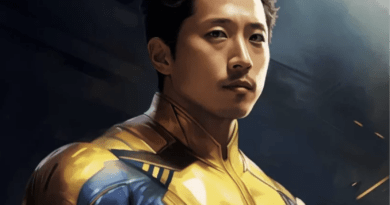She-Hulk Attorney At Law: Episode 3 Review
Article by Kieran Burt.
She-Hulk Attorney At Law delivers another largely unfunny episode, focusing on the parole hearing of Emil Blonsky, and a side plot about a shapeshifter defrauding an ex-boyfriend. The inclusion of this plot in particular is a point of confusion, as it doesn’t add much to the main story of She-Hulk.
Focusing on the main plot first, Jen has to work out a new strategy to help Emil Blonsky achieve parole, and now that her main strategy has been blown out of the water by the viral video of Abomination escaping prison and fighting Wong, she has to formulate something else. She quickly finds out that Blonsky was kidnapped against his will by Wong, and attempts to reach Wong for a statement. These scenes are hurried through without much note, which is an unfortunate consequence of the shorter run time.
In the lead up to Wong’s appearance, Jen monologues to the audience about how this show isn’t solely based on the appeal of cameos, and that audiences need to remember who’s show it is. This fourth wall break isn’t funny, in fact it just pulls the audience out of the show, distracting them from an otherwise interesting turn of events. To jump ahead slightly, Jen makes a comment about it’s nice that the show is tying its A and B plots together, which again, is just distracting.
On the note of She-Hulk being based on the appeal of cameos, a large part of it seems to be. The first two episodes had Hulk be a large part of it, and the main questions coming out of them were where is Hulk going, does this lead to World War Hulk? Finding more about Abomination is a big draw for the second and third episodes, of which Wong is a big part, and marketing has revealed that Charlie Cox’s Daredevil will be in the show. This latter reveal shatters the idea that She-Hulk isn’t built on cameo appeal, because if it was then the creators would have been content to leave this reveal until the relevant episode.
The scene with Wong and Jen is the rare instance of the show being humorous, and it’s definitely all down to Wong’s dialogue. His ideas on how to solve the issue with Abomination all stem from magic, and not only does magic not feature in any US law, it rather hilariously clashes with it. His back and forth between Jen does provide some genuine laughs. She manages to get him to appear at the trial, and play by the law.
The trial itself showcases how much Blonsky has changed as a person, and, though Marvel hasn’t released their lineup for the Thunderbolts yet, this has got to have audiences question whether or not Blonky has reformed too much to be a part of it. This is a major character shift since the audience last saw him, and while some of that can be put down to prison reformation, it’s taken to a point where putting him on a team as morally dubious and Thunderbolts jarring. He will have to backpedal some of this character change to fit in, unless he convinces some of the other members to meditate.
This is where the episode starts to give more time to its B plot. A shapeshifter has defrauded her now ex-boyfriend after convincing him that he was Megan Thee Stallion, and giving her $175,000 in gifts. It plays out like a standard court trial, but sets itself apart by showing the motion to dismiss as a separate case, winning points for some legal realism. The parole trial also gets praise here. Otherwise, this plot has nothing to do with anything for She-Hulk, other than serving to get a Megan Thee Stallion cameo. It’s quite ironic how Jen delivered a rant about the amount of cameos it has, and yet it ignored the most egregious instance.
It’s not entirely clear what purpose this cameo serves, other than simple fan service.
A running theme throughout the episode is the media. The episode makes the point that it’s intrusive, they make up points without research, speculation is rife just for more clicks, people complaining that She-Hulk is woke and other, valid points. Unfortunately, this type of harassment is common, and especially for a high profile-female.
The case of Emil Blonsky’s parole wraps in his favour, and he is allowed to go on parole. This is dealt with highly quickly, too quickly, as the show wants to turn its legal focus back to the superhero stuff. She-Hulk is attacked by a group of males brandishing Asguardian weapons, and once the fight is over one of them complains that he couldn’t get any of her blood, and that his boss would be mad.
The clear attempt to build intrigue of who their boss is fails, because the goons pose absolutely no threat to She-Hulk. There is little urgency posed by their failure. The show could have created more urgency by letting She-Hulk be vulnerable, and having the guys achieve their goal of getting her blood. This would pose interesting narrative questions, and raise the stakes, but this unfortunately wasn’t the route taken.
Episode three has its bright spots, any scene with Wong is quite funny, and the show gets points for its commitment to legal and media fights. However, the fourth wall breaking still doesn’t work, the humour outside of Wong doesn’t work either, and the cameo from Megan Thee Stallion is as confusing as it is pointless. Episode four looks like it will move into a more traditional superhero affair, answering the questions of who sent the goons, and if they will up their efforts.




